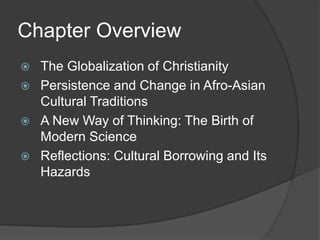Renaissance Humanism was an intellectual movement typified by a revived interest in the classical world and studies which focussed not on religion but on what it is to be human. Its origins went back to 14th-century Italy and such authors as Petrarch (1304-1374) who searched out ‘lost’ ancient manuscripts. By the 15th century, humanism had spread across Europe.
Who wrote Renaissance art? : Johann Neudörffer and the calligraphic revolution: Res: Anthropology and Aesthetics: Vol 77-78
Definition. Very broadly, the project of the Italian Renaissance humanists of the fourteenth and fifteenth centuries was the studia humanitatis: the study of the humanities, “a curriculum focusing on language skills.” This project sought to recover the culture of ancient Greece and Rome through its literature and philosophy and to use this classical revival to imbue the ruling classes with the

Source Image: slideplayer.com
Download Image
The Renaissance, roughly spanning the 14th to 17th centuries, marked a time of cultural, intellectual and scientific advances.From European discoveries of continents and shipping routes to new

Source Image: collegesidekick.com
Download Image
How did Renaissance humanism shape the intellectual and scientific revolution? – Quora
Renaissance Humanism, the Reformation, and the Scientific Revolution all levied challenges towards the preceding intellectual traditions of Medieval Europe, and the Enlightenment would further

Source Image: sutori.com
Download Image
Explain How Renaissance Humanists Influenced The Scientific Revolution
Renaissance Humanism, the Reformation, and the Scientific Revolution all levied challenges towards the preceding intellectual traditions of Medieval Europe, and the Enlightenment would further
Developments in Europe also helped bring about the Scientific Revolution. One development that helped lead to the Scientific Revolution was the growth of humanism during the Renaissance. Humanist artists and writers spent much of their time studying the natural world. This interest in the natural world carried forward into the Scientific
Renaissance, Reformation, and Scientific Revolution | Sutori
Renaissance Humanism began in the later 13th century when Europeans’ hunger for studying classical texts coincided with a desire to imitate those authors in style. They weren’t to be direct copies but drew on old models, picking up vocabulary, styles, intentions, and form. Each half needed the other: You had to understand the texts to take
Unit Four – The Renaissance, Reformation, and Scientific Revolution | Howell World History

Source Image: howellworldhistory.wordpress.com
Download Image
Renaissance Humanism | PDF | Humanism | Philosophical Theories
Renaissance Humanism began in the later 13th century when Europeans’ hunger for studying classical texts coincided with a desire to imitate those authors in style. They weren’t to be direct copies but drew on old models, picking up vocabulary, styles, intentions, and form. Each half needed the other: You had to understand the texts to take

Source Image: scribd.com
Download Image
Who wrote Renaissance art? : Johann Neudörffer and the calligraphic revolution: Res: Anthropology and Aesthetics: Vol 77-78
The Renaissance, roughly spanning the 14th to 17th centuries, marked a time of cultural, intellectual and scientific advances.From European discoveries of continents and shipping routes to new

Source Image: journals.uchicago.edu
Download Image
How did Renaissance humanism shape the intellectual and scientific revolution? – Quora
Renaissance Humanism was an intellectual movement typified by a revived interest in the classical world and studies which focussed not on religion but on what it is to be human. Its origins went back to 14th-century Italy and such authors as Petrarch (1304-1374) who searched out ‘lost’ ancient manuscripts. By the 15th century, humanism had spread across Europe.
Source Image: quora.com
Download Image
Humanism – Wikipedia
The Scientific Revolution is usually said to have occurred in the seventeenth century, but all treatments of this period of great scientific discovery inevitably begin with Nicolaus Copernicus, a Polish canon and astronomer working from a Catholic cathedral in the first half of the fifteenth century – a thoroughly Renaissance man in both time

Source Image: en.wikipedia.org
Download Image
How did the Renaissance humanism, reformation, and scientific revolution change Western culture? – Quora
Renaissance Humanism, the Reformation, and the Scientific Revolution all levied challenges towards the preceding intellectual traditions of Medieval Europe, and the Enlightenment would further
Source Image: quora.com
Download Image
Religion and science | PPT
Developments in Europe also helped bring about the Scientific Revolution. One development that helped lead to the Scientific Revolution was the growth of humanism during the Renaissance. Humanist artists and writers spent much of their time studying the natural world. This interest in the natural world carried forward into the Scientific

Source Image: slideshare.net
Download Image
Renaissance Humanism | PDF | Humanism | Philosophical Theories
Religion and science | PPT
Definition. Very broadly, the project of the Italian Renaissance humanists of the fourteenth and fifteenth centuries was the studia humanitatis: the study of the humanities, “a curriculum focusing on language skills.” This project sought to recover the culture of ancient Greece and Rome through its literature and philosophy and to use this classical revival to imbue the ruling classes with the
How did Renaissance humanism shape the intellectual and scientific revolution? – Quora How did the Renaissance humanism, reformation, and scientific revolution change Western culture? – Quora
The Scientific Revolution is usually said to have occurred in the seventeenth century, but all treatments of this period of great scientific discovery inevitably begin with Nicolaus Copernicus, a Polish canon and astronomer working from a Catholic cathedral in the first half of the fifteenth century – a thoroughly Renaissance man in both time